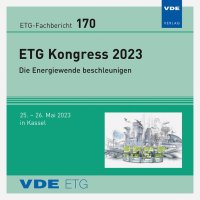The impact of spatial resolution in energy system optimization models on AC-power flow convergence
Konferenz: ETG Kongress 2023 - ETG-Fachtagung
25.05.2023-26.05.2023 in Kassel, Germany
Tagungsband: ETG-Fb. 170: ETG Kongress 2023
Seiten: 7Sprache: EnglischTyp: PDF
Autoren:
Alaya, Oussama; Lens, Hendrik (University of Stuttgart, Institute of Combustion and Power Plant Technology (IFK), Stuttgart, Germany)
Cao, Karl-Kien (German Aerospace Center (DLR), Institute of Networked Energy Systems, Stuttgart, Germany)
Buschmann, Jan (German Aerospace Center (DLR), Institute of Networked Energy Systems, Oldenburg, Germany)
Inhalt:
Energy system optimization models (ESOMs) are often used to design future energy supply systems in terms of scenario development. However, the representation of power grids in ESOMs – due to these having a much broader scope than only grids – is simplified, e.g., by spatial aggregation and DC-power flow constraints. Such simplification is necessary to obtain optimization problems that can be solved in reasonable time. As a consequence, the level of detail of ESOMs is not suitable for the evaluation of concrete implementation projects (e.g. projects of common interest). Hence, grid operators need to use much more detailed power system models based on AC-power flow representations. In this paper we first discuss two dimensions of the gap between ESOMs and transmission network modeling, namely the spatial resolution and mathematical formulation scales. Second, we propose a coupling framework to bridge the gap. The proposed method is applied to a study case using the German power grid to analyze the effect of spatial resolution on AC-feasibility. Obtained results with 44, 84 and 134 spatial clusters, show that commonly used resolutions, e.g., 16 clusters for a federal state level in Germany, are insufficient to observe convergence. Even with 84 spatial clusters, more than 2000 feasibility violations occur. This is nearly avoided (in 99,6% of the time steps in year) at 134 clusters, while this resolution still allows for a reduction of computing time of about 90% compared to solving the fully resolved ESOM. The results also show that the overloading of the branches using a DC-power flow approach can not be used to predict AC-feasibility.


